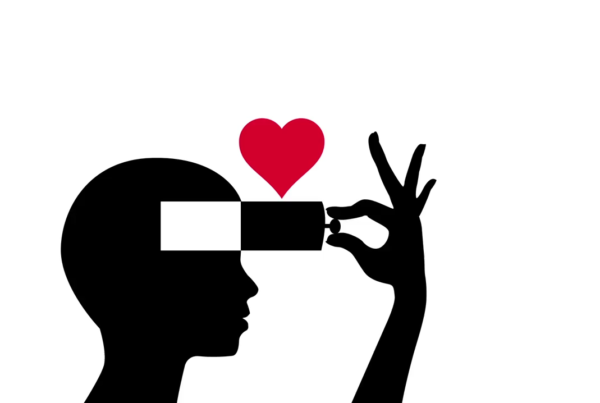
Self-actualization is the ultimate goal of success by design.
Owning your own business is an opportunity to constantly test your motivation and fully develop your personality. There is no time limit on your personal and professional growth on the journey to success; however, you do experience it in identifiable stages.
In 1954, Abraham Maslow fully expressed his theory of human motivation in his book Motivation and Personality. His ideas parallel many other theories of human developmental psychology and focus on physiological, safety, belongingness, love, esteem, self-actualization and self-transcendence needs to describe the pattern our motivations generally move through.
(You may recall that, in my earlier work, I had consolidated these to four basic human drivers: acceptance, belonging, validation, and love.)
Maslow studied exemplary people such as Albert Einstein, Jane Addams, Eleanor Roosevelt, and Frederick Douglass and the healthiest 1% of the college student population in researching his theories.
You often see his hierarchy of needs portrayed in the shape of a pyramid with the largest, most fundamental levels of needs at the bottom and the need for self-actualization at the top. While the pyramid has become the standard way to represent the hierarchy, Maslow himself never used a pyramid to describe these levels in any of his writings.

It is important to understand the order in which these needs are fulfilled does not always follow this standard progression. For example, Maslow notes that for some individuals, the need for self-esteem is more important than the need for love. For others, the need for creative fulfillment may supersede even the most basic needs.
A self-actualized person lives creatively and fully using his or her potentials. They feel finally themselves, safe, not anxious, accepted, loved, loving, and alive, certainly living a fulfilling life. This level of success can be reached by anyone; it has no direct relationship to your revenue or income derived from your business. People living in poverty have also achieved self-actualization.
Although Maslow’s theory does suggest the most basic level of needs must be met before a person will strongly desire (or focus on) secondary or higher level needs, I know from first-hand experience self-actualization can exist in the absence of all the other levels of the hierarchy.
Before my accident, I wouldn’t have thought that possible. But, having been stripped of everything that comprises the four lower levels of the pyramid, with no loss to self-actualization, I have changed my thinking entirely.
In reality, I lost just about everything listed in levels 1 through 4. Yet, while it made for miserable living conditions and challenging daily circumstances, those multiple losses did not erode my morality, creativity, spontaneity, lack of prejudice or ability to accept the facts in any way at all.
I did experience an impact on problem solving due to severe cognitive impairments imposed by the brain injury and it is likely I will not recover my former level of ability in this regard. But, what I did not lose was my natural inclination to attack and solve problems rather than be defeated by them regardless of their magnitude. It just took me some time to figure out new ways to approach problematic challenges.
In his studies, Maslow found self-actualizers share certain similarities. Whether famous or unknown, educated or not, rich or poor, they tend to fit the following profile. I can see that, despite the severity and profound impact of my injuries, these characteristics remain intact. And with that realization, I have found the premise for designing a new framework for our SMARTSTART Community to use next year. For all that, I am truly thankful.
Maslow’s self-actualizing characteristics
- Efficient perceptions of reality. Self-actualizers judge situations correctly and honestly. They are very sensitive to the fake and dishonest, and are free to see reality ‘as it is’.
- Comfortable acceptance of self, others, nature. Self-actualizers accept their own human nature with all its flaws. The shortcomings of others and the contradictions of the human condition are accepted with humor and tolerance.
- Reliant on own experiences and judgement. Independent thinking, not reliance on culture and environment, is used to form opinions and views.
- Spontaneous and natural. True to oneself, rather than being how others want. Self-actualized people do not care what you think about them.
- Task centering. Most of Maslow’s subjects had a mission to fulfill in life or were working on some task or problem ‘beyond’ themselves (instead of outside of themselves) to pursue. Humanitarians such as Albert Schweitzer and Mother Teresa are considered to have possessed this quality. (One of my post-accident missions is to open the window of understanding for the suicidal. You can see how I’m doing that here.)
- Autonomy. Self-actualizers are free from reliance on external authorities or other people. They tend to be resourceful and independent.
- Continued freshness of appreciation. The self-actualizer seems to constantly renew appreciation of life’s basic goods. A sunset or a flower will be experienced as intensely time after time as it was at first. There is an “innocence of vision”, like that of an artist or child.
- Profound interpersonal relationships. The interpersonal relationships of self-actualizers are marked by deep loving bonds.
- Comfort with solitude. Despite their satisfying relationships with others, self-actualizing persons value solitude and are comfortable being alone.
- Non-hostile sense of humor. This refers to the ability to laugh at oneself.
- Peak experiences. All of Maslow’s subjects reported the frequent occurrence of peak experiences (temporary moments of self-actualization). These occasions were marked by feelings of ecstasy, harmony, and deep meaning. Self-actualizers reported feeling at one with the universe, stronger and calmer than ever before, filled with light, beautiful and good, and so forth.
- Socially compassionate. Possessing humanity.
- Few friends. Few close intimate friends rather than many surface relationships.
Maslow also coined the term Metamotivation to describe the motivation of people who go beyond the scope of the basic needs and strive for constant betterment. The unrelentless pursuit of excellence has guided my entire life with great joy in determination. (Metamotivation is what motivates and impels an individual toward self-actualization and excellence.)
Metamotivation is distinct from motivation operating in the lower level needs and emerges after lower needs are satisfied. Maslow describes a metaneed as any need for knowledge, beauty, or creativity.
Maslow’s list of Metaneeds:
- Wholeness (unity)
- Perfection (balance and harmony)
- Completion (ending)
- Justice (fairness)
- Richness (complexity)
- Simplicity (essence)
- Liveliness (spontaneity)
- Beauty (rightness of form)
- Goodness (benevolence)
- Uniqueness (individuality)
- Playfulness (ease)
- Truth (reality)
- Autonomy (self-sufficiency)
- Meaningfulness (values)
Regardless of your primary motivation and driving needs, as I discussed in last month’s post, your mind must always be congruently aligned to your heart and voice for your integrity to remain solid, intact and unshakeable. If any one aspect is out of sync, you risk acting or speaking out of integrity.
Subsequently, any success that may arise will be hollow and short-lived. And you will not be able to believe in it or yourself when all around you speak otherwise.
That is not what I want for you…
More next time. Until then, remember to LOVE YOUR WORK, whatever it may be.
PS I hope you’ll find the new RAISING THE BAR series inspiring. If so, please share this post with friends and followers. You never know what burdens others are carrying or how much their load might be made lighter by doing so. ♥♥♥
~~~~~~~~~~~~~~~~~~~~~~
ABOUT RAISING THE BAR:
Raising The Bar is a new series for the SMARTSTART community that has been taking shape in my head for most of the time I’ve spent working to recover from catastrophic brain, spinal cord and psychological injuries resulting from a near fatal accident in 2009. Success, whether it’s in rehab, business, relationships, or life, hinges on our ability to master this simple formula: Belief (B) + Attitude (A) = Response (R).
I’m excited to be sharing it with you now as a next step in my injury recovery. Consider this your invitation to join me on a grand adventure. Oh, the places we will go! Including all the places that scare us most. For that is where the greatest opportunities for joy and happiness — the true measures of success — reside!



